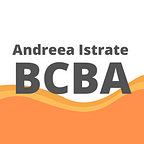Toilet training: three essential strategies
Toilet training can often be time-consuming, overwhelming and frustrating for parents of all children, especially when there are so many different approaches to choose from. Yet, if your child has learning difficulties, the job requires extra care and attention.
Behaviour analysts have been researching this topic since the 1970s and have identified successful ways of teaching children or institutionalised adults to urinate and defecate successfully in the toilet.
This article covers three essential strategies to help your toilet training journey be as smooth as possible. Although these methods have been proven to successfully teach children and adults with special needs how to use the toilet, they can easily be applied to neurotypical children as well. But first, let’s briefly talk about the best time to start toilet training.
When can I start toilet training with my child?
To maximise your chances of success when toilet training your child, it is crucial to start only when the child shows clear signs that they are either urinating or defecating. In other words, you should start when they are capable of recognising the sensation for elimination.
For example, your child might suddenly stand still for a few minutes whilst they are urinating, or they may squat for a while in their efforts to defecate. If your child shows clear and visible signs of voiding, then you can start toilet training.
Once you see the signs and identify it’s the right time to start, there are three essential parts of toilet training to keep in mind: reinforcement-based training, scheduled sittings and hydration. We will go through each of them in a bit more detail below.
Strategy 1 of toilet training: Hydration
Hydration involves offering liquids to your child, both in large volume (Azrin & Foxx, 1971; Richmond, 1983) and in high preference (Wilson, 1995). In layman’s terms, this means you increase how much liquid your child drinks. If they’re fussy with water, you can always dilute a bit of juice to ensure they will accept the drink.
Strategy 2 of toilet training: Scheduled sittings
Scheduled sittings involve placing your child on the toilet at predetermined elimination-likely times (Baumeister & Klosowski, 1965) or at regular, non-contingent time intervals (Wilder, Higbee, Williams, & Nachtwey, 1997).
Let’s unpack that jargon. What is the difference between ‘predetermined elimination-likely times’ and ‘non-contingent time intervals’?
· For predetermined elimination-likely times you keep tracks of all the pees and poos your little one does for about a week. This way, you build up a schedule and know when your child is likely to need the toilet (e.g. a pee around 8 am or a poo around 1 pm)
· For non-contingents time intervals, you start off with fixed intervals, meaning you place your child on the toilet every 15 or 30 minutes (you choose how frequent these intervals are). These intervals are fixed and have nothing to do with your child’s actual voiding programme (because you are still figuring that out).
In my experience, the easiest way to start toilet training is by using the non-contingent time intervals and then, based on the data we collect, to personalise the schedule and sit the child on the toilet around their identified elimination-likely times.
I find this way of scheduling the easiest because parents usually don’t have the time to track all the voids properly. Moreover, placing the child on the toilet often gives them a lot more opportunities to be successful and receive positive reinforcement, which leads me to the third and final strategy, reinforcement-based training.
Strategy 3 of toilet training: Reinforcement-based training
The final and most important toilet training strategy is the contingent positive reinforcement of successful voids in the toilet.
Positive reinforcement involves adding a reinforcing stimulus following a behaviour, which makes it more likely that the behaviour will occur again in the future. When a favourable outcome, event, or reward occurs after an action (contingent), that particular response or behaviour will be strengthened.
To put it simply, with this method, you reward your kid and reinforce the behaviour you want them to achieve. The best thing about positive reinforcement is that you can use anything your child likes: edibles (crisps, sweets, vegetables or fruits) or access to specific toys or activities.
In my experience, for the reinforcement to work, it needs to be restricted to the successful void in the toilet. For example, if you decide to reinforce voiding in the toilet with the IPad, then the IPad must only be used when your child engages in this behaviour. If your child gets access to the IPad without voiding in the toilet, then getting access to it won’t function as reinforcement anymore, and toilet training will be prolonged.
For these strategies to be successful, it is crucial to combine them with lots of practice and graduated guidance. These strategies have always proven successful in all my toilet training programmes with fast positive outcomes.
In case you get stuck, or your child has more specific needs, please contact a Board Certified Behaviour Analyst to help out. If you have any questions or would like to work with me, you can email me at andreeaistratebcba@gmail.com.
References:
Azrin, N. H., & Foxx, R. M. (1971). A rapid method of toilet training the institutionalised retarded. Journal of Applied Behavior Analysis, 4, 89–99.
Baumeister, A., & Klosowski, R. (1965). An attempt to group toilet severely retarded patients. Mental Retardation, 3, 24–26
Kroeger, K. A., & Sorensen-Burnworth, R. (2009). Toilet training individuals with autism and other developmental disabilities: A critical review. Research in Autism Spectrum Disorders, 3(3), 607–618
Wilder, D. A., Higbee, T. S., Williams, W. L., & Nachtwey, A. (1997). A simplified method of toilet training adults in residential settings. Journal of Behavior Therapy and Experimental Psychiatry, 28, 241–246.
Wilson, M. (1995). Generic habit-training program. Focus on Autistic Behavior, 10, 1–8.
